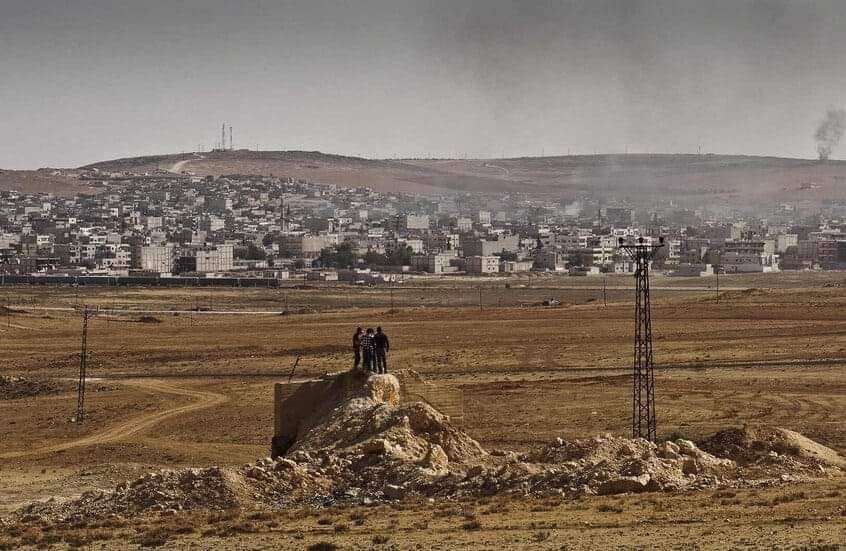
Ukrainian sources have recently claimed responsibility for a series of military strikes on Russian military targets in Syria, further complicating the geopolitical landscape in the region. Concurrently, Russia has expanded its military presence in northern Syria, establishing new bases near the Turkish border, indicating a strategic move to consolidate its influence and “monitor ceasefire agreements.”
The Ukrainian newspaper Kyiv Post reported on July 31, 2024, that Ukrainian forces carried out a military strike on Russian forces near the Kuweires military airport in Aleppo province. The strike, attributed to a Ukrainian group calling themselves “Khimik,” resulted in the destruction of military equipment. The attack was reportedly conducted on July 24, just one day after Assad met with Russian President Vladimir Putin in Moscow.
The Kyiv Post published video recordings purportedly showing the attack, which included the targeting of a military vehicle and a drone assault on the airport. The Ukrainian Main Intelligence Directorate was cited as the coordinating body behind the operation. According to the newspaper, the Kuweires military airport has been used by Russia to train and transport Syrian fighters to Ukraine, highlighting the intertwined nature of the Syrian and Ukrainian conflicts.
This incident is not isolated; in June 2024, the Kyiv Post also reported an attack by Ukrainian special forces on Russian patrols near the occupied Syrian Golan. These operations, if confirmed, suggest a deliberate Ukrainian strategy to extend its conflict with Russia into new theaters, potentially diverting Russian resources and attention away from the Ukrainian front.
Amid these Ukrainian claims, Russia has been solidifying its military footprint in northern Syria. On August 2, 2024, the Russian TASS news agency reported that Russia established a new military base in the Ayn al-Arab (Kobani) area, northwest of Aleppo and close to the Syrian-Turkish border. Colonel Oleg Ignasyuk, Deputy Director of the Russian Center for Reconciliation in Syria, stated that this move was part of ongoing efforts to “monitor the cessation of combat operations between conflicting parties.”
The Syrian Observatory for Human Rights (SOHR) reported that this new base is part of a broader strategy, with two additional bases being established around Ain al-Arab in June 2024, in the villages of Bir Hasu and Jabal al-Iza. SOHR noted that on June 29, Russian forces brought significant reinforcements, including weapons, ammunition, military vehicles, and dozens of soldiers, to the Jabal al-Iza base.
Russia’s presence in Ain al-Arab dates back to October 2019 during Turkey’s Operation Peace Spring, which targeted the Syrian Democratic Forces (SDF) east of the Euphrates. Following the US withdrawal from several bases in the region, Russian forces quickly moved in, establishing a significant presence, including at the Sarin Air Base.
The Russian government has yet to officially acknowledge the Ukrainian claims of attacks, with Russian media largely dismissing them as psychological operations intended to bolster Ukrainian morale amid ongoing difficulties on the Ukrainian front. Konstantin Sivkov, a Russian military expert, suggested that the Ukrainian claims were attempts to create a false sense of success and destabilize the political situation in Russia.
Russia’s latest military expansions and the alleged Ukrainian strikes in Syria underscore the strategic complexities of the Syrian conflict, which has become a theater for broader geopolitical contests. The Ukrainian strikes represent a potential shift in tactics, aiming to pressure Russia beyond the traditional Ukrainian battlegrounds. Meanwhile, Russia’s expanded military infrastructure in northern Syria enhances its capacity to influence the region’s dynamics, monitor ceasefire agreements, and support its strategic ally, the Syrian regime.








